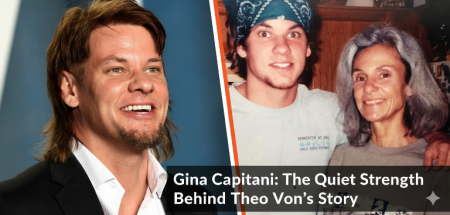Living with a disability can make everyday things a lot harder—stuff like getting dressed, cooking, going places, or finding work. That’s why the NDIS exists. It’s short for the National Disability Insurance Scheme, and it’s there to help people with disabilities live more independently and do more of the things they want to do.
The NDIS isn’t just about money—it’s about support. It helps people get what they need to handle daily life, build confidence, and reach personal goals. Everyone’s situation is different, so the NDIS is designed to be flexible. That way, each person can get support that actually fits their life, not just some standard program.
Who Can Use the NDIS?
Not everyone can join the NDIS, but it’s open to a lot of people. To be eligible, someone needs to:
- Be under 65 when they apply
- Live in Australia and be a citizen (or have the right residency status)
- Have a permanent disability that affects how they do things each day
If someone meets these requirements, they can apply. Once they’re approved, they’ll get a personal plan that lays out the kind of help they’ll receive. It’s not just a list—it’s a plan that’s built around what matters to that person, like becoming more independent, learning skills, or being more involved in their community.
What Does the NDIS Actually Cover?
The NDIS pays for services and supports that are considered “reasonable and necessary” for that person’s needs and goals. That could mean:
- Help with daily stuff like cooking, showering, or cleaning
- Getting around—whether it’s transport or mobility equipment
- Therapy like speech, physio, or occupational therapy
- A support worker to help with learning or social activities
- Technology or tools that make life easier
- Help finding and keeping a job or going to school
What someone gets depends on what they need to live the life they want. Some might need physical support every day, while others just need help with planning or getting out into the community.
Finding the Right Support Matters
Once a person has their NDIS plan, the next step is choosing the right service providers. These are people or organisations that deliver the support listed in the plan. It’s super important to work with providers who are experienced, friendly, and actually understand what the person needs.
For example, some people choose providers such as Dream Maker Community Services for more personalised and flexible support. They’re just one option, though—it’s always smart to look around and see who offers the kind of help that really fits. Every person’s needs are different, so the best provider is the one that makes them feel supported and respected.
And if something isn’t working, it’s totally fine to switch. The NDIS gives people the power to choose who they work with, which means they’re not stuck with services that don’t work for them.
Why the NDIS Exists
Before the NDIS, getting support could be really frustrating. Services were often limited, and people didn’t get to choose how their funding was used. Now, things are way more focused on the individual.
The whole idea behind the NDIS is giving people more control. Instead of being told what they can or can’t access, they get to set their own goals and decide how they want to live. That shift—putting the person in charge—makes a massive difference.
It’s not just about surviving. It’s about thriving. Being able to work, meet people, learn new skills, and feel like part of the community should be possible for everyone, and the NDIS helps make that happen.
How to Apply for the NDIS
If someone thinks they might be eligible, the best thing to do is reach out to the NDIS directly or speak with a Local Area Coordinator (LAC). They’ll walk them through the steps, which usually look like this:
- Sending in medical info or reports that explain the disability
- Sharing how the disability affects everyday life
- Setting up a planning meeting to talk about goals and supports
The process can take time, but there’s help available along the way—either from family, support coordinators, or community groups who know how it all works.
After You Get Approved
Once someone’s plan is approved, they can start using it. The plan usually runs for a year, but it can be updated if anything changes.
Some people manage their own funding, while others choose to have it handled by a plan manager or the NDIS itself. There’s no right or wrong choice—it depends on what works best.
As the year goes on, people can review their plan and make updates. If their goals change, or if their current supports aren’t working, they can adjust things. It’s all about making sure the plan keeps working for them—not the other way around.
Real-Life Impact
The NDIS doesn’t just hand out support—it opens doors. It helps people feel more independent, more confident, and more connected.
Think about someone who needs help with transport. With the right support, they might be able to go to school, visit family, or get a job. Or someone who needs help at home might now be able to cook for themselves, clean, and even live on their own.
These aren’t just small wins—they’re life-changing. It’s about giving people the chance to live how they want, without being held back by things they can’t control.
What to Take Away From All This
The NDIS is about choice, support, and real independence. It’s not perfect, and figuring it out can sometimes feel a bit confusing, but the difference it makes is huge.
Here’s what really matters:
- Everyone’s situation is different, so support should be too.
- The NDIS helps people build the life they want—not just get by.
- Good support providers make a big difference, so it’s worth finding the right one.
- It’s okay to ask for help—and it’s smart to know what kind of help is out there.
At the end of the day, nobody should feel stuck just because they have a disability. With the right support, everyone deserves the chance to grow, learn, and live with confidence.
Final Thoughts
Understanding the NDIS doesn’t have to be complicated. It’s really just about making sure people with disabilities have the support they need to live a good life. Whether that means learning new skills, getting help with daily routines, or feeling more confident out in the community, the NDIS is there to make things a bit easier. If someone thinks the NDIS could help them or someone they know, it’s worth looking into. Asking questions, talking to support workers, or reaching out to trusted providers can make the process feel a lot more manageable. And the best part? No one has to figure it all out alone. Support is out there—you just have to know where to look.






